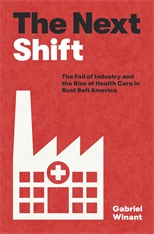UE’s 78th Convention was held in Pittsburgh, a city that is not only home to the union’s national office but also to a rich history of worker organizing and strikes. As far back as 1845 and 1848, women working in cotton factories in Allegheny City — a city on the north shore of the Allegheny River which was incorporated into Pittsburgh in the early 20th century — struck against 12-hour workdays, winning a state law in 1848 limiting the workday to 10 hours.
Pittsburgh was also one of the centers of the Great Railroad Strike of 1877, which labor historian Philip Foner called “one of the most widespread and militant strikes” in U.S. history.
Foner pointed out that the strike enjoyed widespread support because “a great many people in America bitterly hated the railroads. Rate discrimination against individuals, firms, and whole communities; stock manipulation, bribery, corruption, and the wholesale robbery of the public domain had so infuriated the people that they welcomed the chance to aid the strikers.” Nowhere was this more true than in Pittsburgh, where the strike “was supported by all classes in the city.”
Assuming that local militias would sympathize with the strikers, the governor sent the Philadelphia militia to crush the strike in Pittsburgh — resulting in the murder of 20 men, women and children by the militiamen. Thousands of factory workers, miners, and other workers rushed to the defense of the strikers and forced the troops to withdraw, prompting the New York World to declare that Pittsburgh was “in the hands of men dominated by the devilish spirit of communism.”
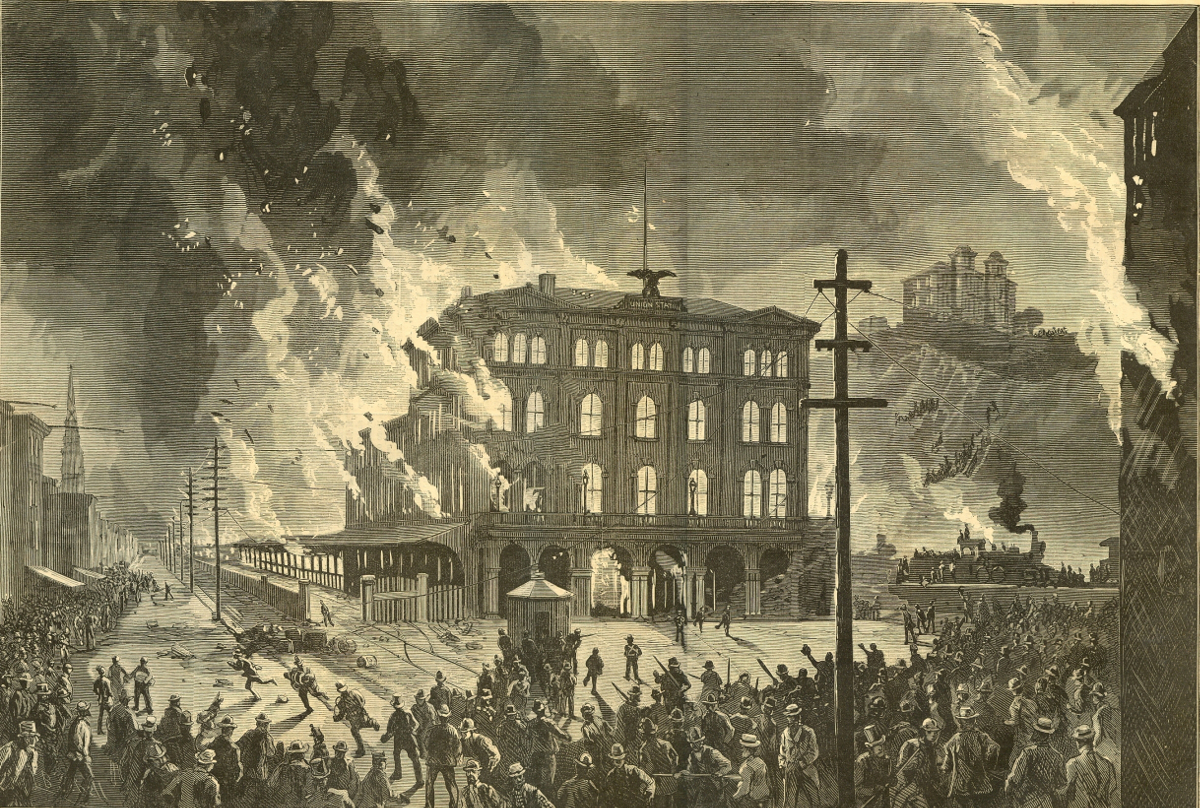
Destruction of the Union Depot, published in Harper's Weekly (public domain). Inflammatory coverage of the strike was widespread.
The railroad strike was eventually crushed by a combination of military power and red-baiting, and was unsuccessful in defeating the wage cuts which sparked it. However, workers across the country were left with a sense of their own power and memories of, according to one participant, “white and colored men, standing together, men of all nationalities in one supreme contest for the rights of workingmen.”
Founding of AFL and CIO
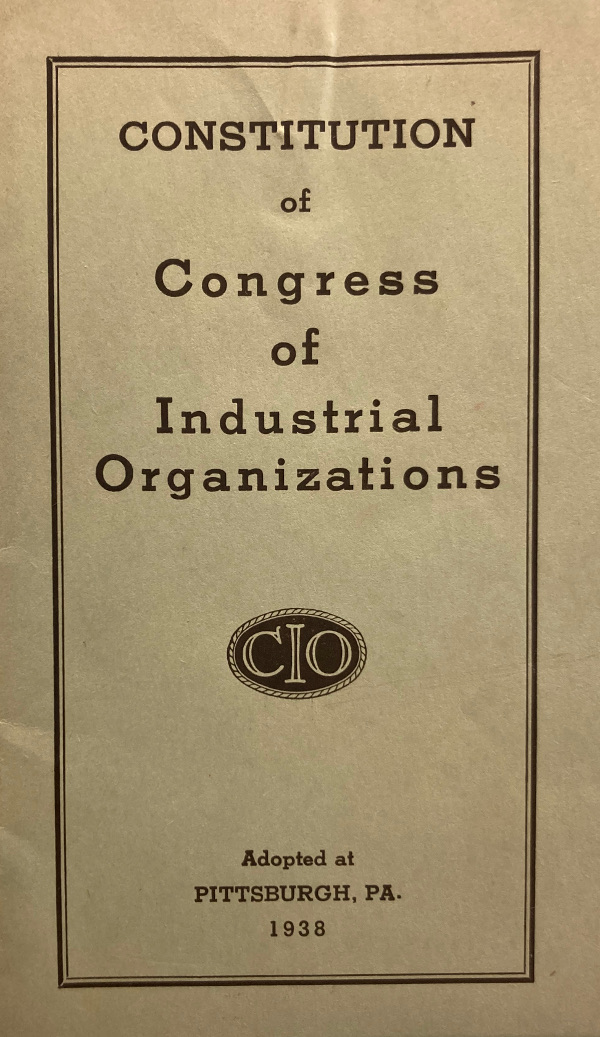
In 1881, the founding convention of what was to become the American Federation of Labor was held in Pittsburgh. Although by the time the UE was formed the AFL had become a bastion of conservative business unionism, its founders shared a similar understanding of class conflict, recognizing that “A struggle is going on ... between the oppressors and oppressed of all countries, a struggle between capital and labor.”
Foner points out that this understanding of the world stood “in sharp contrast to the theory of the identity of interest between labor and capital held by most leaders of the Knights of Labor,” at the time the dominant organization in the U.S. labor movement. The formation of the AFL was driven in part by the opposition to the use of strikes by many of the Knights’ national leaders, and the Federation of Organized Trades and Labor Unions (as it was known until 1886) was the organization that first issued the call for workers to strike for the eight-hour day on May 1, 1886.
Fifty-seven years later, however, the inability of the AFL’s craft unions to organize the industries of Pittsburgh — its steel mills but also its massive electrical plants — was invoked by Mineworkers’ President John L. Lewis at the founding convention of the Congress of Industrial Organizations, held here in 1938. In contrast with the AFL, which insisted that different crafts in industrial plants join different unions (37 separate AFL unions claimed jurisdiction in the plants which UE organized), the unions of the CIO practiced industrial unionism which, as explained by the preamble to the UE constitution, “unites all workers on an industrial basis ... regardless of craft, age, sex, nationality, race, creed, or political beliefs.” And, as Lewis pointed out in his address to the new federation’s founding convention, CIO unions like the Steelworkers and UE had succeeded in a few short years in turning Pittsburgh from a bastion of anti-unionism into one of the strongest union towns in the country.
Counter-Attacks on Workers’ Strike Power
During the massive 1946 strike wave tens if not hundreds of thousands of workers hit the streets in Pittsburgh and the surrounding areas, the majority of them steelworkers but also including more than 20,000 members of UE Local 601 at the giant Westinghouse plant in East Pittsburgh. The success of those strikes — in steel, auto, electrical manufacturing and other industries — consolidated industrial unionism and established, for the first time, a decent standard of living for manufacturing workers in the U.S.
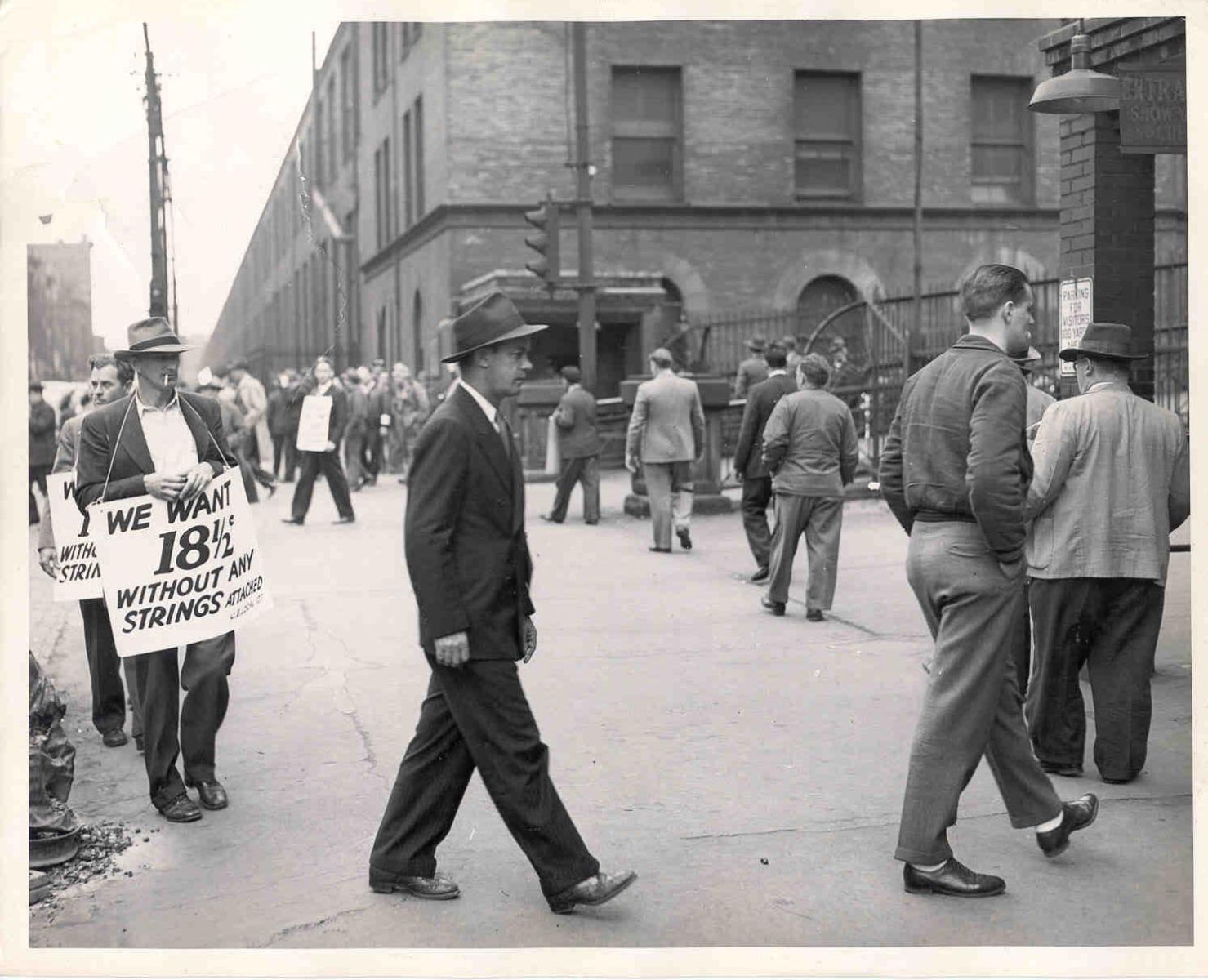
UE Local 601 strikers at East Pittsburgh Westinghouse plant, 1946.
In September 1946, Pittsburgh was also one of several U.S. cities to see a general strike, as AFL and CIO members struck in solidarity with an independent union at the Duquesne Light Company, forcing the courts to lift an injunction against their strike and release their union president from jail.
Afraid of the working-class power demonstrated by the working class in the 1946 strike wave, corporations and the government launched an all-out attack on militant unionism, and Pittsburgh became, in the words of historian David Caute, the “violent epicenter” of the wave of red-baiting attacks on UE and other militant unions. With the assistance of the Catholic Church and the officialdom of the AFL and CIO, companies and government charged that militant unions were “communist dominated,” fired and blacklisted militant union leaders, and in the case of UE, set up a rival union, the IUE, which raided UE shops across the country.
While the attacks failed to destroy UE outright, they inflicted heavy damages, including the loss of Local 601 — at that time the largest local in the national union.
As UE noted in our 2020 booklet, Them and Us Unionism, the attacks on “them and us unionism” had the effect of taming most of the labor movement:
The mainstream of the labor movement embraced the idea that workers and bosses share common interests, became even more tightly joined at the hip with the Democratic Party, and ceded the right to make all decisions about the economy and foreign policy to employers and the government.
When the employers ditched any pretense of a “labor-management accord” and launched all-out attacks on the labor movement in the 1970s and 80s, the mainstream of the labor movement had little idea how to respond. Without an accurate analysis of capitalism, or the ability to formulate an alternative vision, unions were unable to respond effectively or build public support for any kind of fightback. The only response many union leaders could muster was to offer deeper concessions.
Bucking the wave of concession bargaining that was sweeping the U.S. labor movement, the 1981-82 strike by UE Local 610 at Wabco (now known as Wabtec), just outside of Pittsburgh, captured the imagination of union members throughout the country. Local 610 members refused to accept the concessions demanded by their employer, instead launching a militant, 205-day strike. They won a contract that, the UE NEWS reported, “effectively buried the major company concession demands that would have gutted the Local 610 contract,” while retaining cost-of-living protections, providing a general wage increase and improving benefits and pensions. During the strike, rank-and-file members of IUE Local 601 regularly contributed to the Local 610 strike fund, despite national IUE leaders’ attempts to dissuade them from aiding the “communist” UE.
Deindustrialization and the New Working Class
But the fightback by Local 610 was an exception, and a single strike couldn’t reverse the decisions of capitalists to shut plants and move work to places with cheaper, non-union labor. Deindustrialization hit Pittsburgh especially hard, with the unemployment rate in the city hitting 17.1 percent in 1983. The unemployment rate for Black workers reached a Depression-level 25.6 percent.
As manufacturing — which in Pittsburgh primarily meant the steel industry — declined, a new industry rose to dominance in Pittsburgh: the healthcare industry. Historian Gabriel Winant describes this process in his 2021 book, The Next Shift: The Fall of Industry and the Rise of Health Care in Rust Belt America. The generous healthcare benefits won by the Steelworkers and other industrial unions in the 1940s and 50s, which Winant describes as “one of organized labor’s most significant accomplishments,” along with the creation of Medicare and Medicaid in 1965, fueled the growth of hospitals from the 60s through the 80s.
Hospitals, in turn, were called upon to manage a lot of the social problems caused by job loss, an aging population, and the lack of a robust social safety net. As Winant points out, “In capitalist societies, where survival is linked to market employment, job loss wreaks havoc on working-class people’s physical and mental health.”
This created a new working class as women who might once have been able to stay home and take care of children and elders while living on a steelworker husband’s salary were drawn into paid care work in the expanding healthcare system. This was especially true of Black women, whose husbands never had the same access to good union jobs as their white counterparts, especially in the notoriously racist and sexist steel industry. By 1990, healthcare accounted for 11.5 percent of all employment in Pittsburgh, and in 2007 signs bearing the name of the healthcare conglomerate UPMC were placed at the top of Pittsburgh’s tallest skyscraper, the U.S. Steel tower — a building that had once been a symbol of the city’s industrial might now declaring the ascendancy of healthcare.
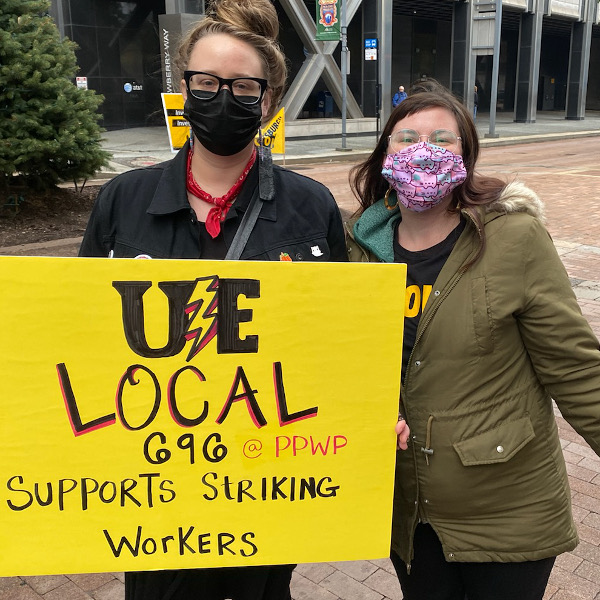
UE Local 696 members supporting UPMC workers on strike.
It is among this new working class in the service sector — far more diverse in terms of gender, race and sexuality than the “industrial” working class of the mid-20th century — that many of the battles of the last several decades have been fought. Over the past 25 years, UE has brought in three new locals in Pittsburgh in this sector: Local 613 at the Western Pennsylvania School for Blind Children, Local 667 at the East End Food Co-op, and most recently Local 696 at Planned Parenthood of Western Pennsylvania. Several Starbucks stores in Pittsburgh have joined Workers United as part of the wave of Starbucks unionization over the past two years, and workers at other coffee shops have joined the United Food and Commercial Workers. Although UPMC remains largely non-union, workers there continue their long struggle to organize Pittsburgh’s largest employer, staging a one-day strike in November 2021.
While Pittsburgh’s new working class has yet to win the same kind of widespread union recognition that brought a degree of security to their predecessors in the steel mills and factories of Pittsburgh past, they have formed the key base for political change. In 2018, two young working-class women, backed by UE and an army of mostly young, working-class volunteers, unseated incumbent establishment Democrats in two state representative races. Those women, Summer Lee and Sara Innamorato, have gone on to win election to the U.S. Congress (Lee) and the Democratic nomination for Allegheny County Executive (Innamorato, who is poised to win the general election in November). The political organization they founded, UNITE!, has helped working-class candidates win election to the state house as well as city and county council seats, and most dramatically helped Ed Gainey unseat an incumbent mayor in 2021 (both Lee and Gainey addressed the convention). Central to Gainey’s platform was making UPMC accountable to its workers and to the Pittsburgh community.
As Lee pointed out in her remarks to the convention, while Pittsburgh is a “union town,” its working class is “ever fighting” — fighting for a fair contract at the Pittsburgh Post-Gazette, where workers had been on strike for almost a year as the convention met; fighting for a first contract at Starbucks; and fighting for union recognition at UPMC. “Power concedes nothing without a demand,” Lee reminded the delegates, and UE members, like the working class of Pittsburgh, roared with approval that they are ready for that fight.

